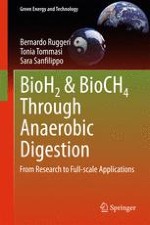
2015 | OriginalPaper | Chapter
1. Ecological Mechanisms of Dark H2 Production by a Mixed Microbial Community
Authors : Bernardo Ruggeri, Tonia Tommasi, Sara Sanfilippo
Published in: BioH2 & BioCH4 Through Anaerobic Digestion
Publisher: Springer London
Activate our intelligent search to find suitable subject content or patents.
Select sections of text to find matching patents with Artificial Intelligence. powered by
Select sections of text to find additional relevant content using AI-assisted search. powered by